The Song Sparrows Stayed!
|
Widget for blogger by Way2Blogging | Via Spice Up Your Blog Gadgets
|
Release the Song Sparrows!
Friday, February 25, 2022
1 commentsOnce the three orphaned song sparrows were used to flying up to a pedestal to feed, I switched to topping it with a large flat board. All these changes took place over the week and a half they were in the tent. I wanted them to be completely comfortable with the feeding setup before they were released. Once they were reliably feeding on the board-topped pedestal, they were ready to go. It was September 17, and they were 27 days old. I had chosen this day for release because Margaret Morse Nice, Ohio song sparrow guru and author of one of the finest single-species studies ever done, wrote that the longest she’d ever observed her subjects feeding their young was Day 27. So be it.
I opened the tent at 11:15. Baby sunbathed in the unaccustomed bright rays, but the birds acted as though they didn’t notice the open sky, now revealed with the screen rolled back. At 12:14 pm, Bob was the first to fly out, leaving Ball and Baby stunned and standing still at the mouth of the tent. It was a beautiful warm calm day, perfect for them to get their bearings outdoors. At 12:45 pm, Baby flew out into the driveway.
She was gone for a few moments, then she flew back into the garage and tried to get back into the tent. She changed her mind and flew to the nearby forsythia. All the while, Ball stood and watched. He was still sitting at the open end at 1:20 pm. He was terribly conflicted, and spending a lot of time foot-staring and hiding in the folds of the tent. There was no sign of the two released birds. I calmed myself, saying they’d be back when they got hungry. 2:15: Ball still lingered in the tent. At 2:53, he made a straight flight out the door and hid under my car in the driveway. I set up the pedestal where he could see it, well stocked with millet and mealworms. I kept hearing rustling in the roses along the garage, but I didn’t see any of my babies from 3 pm until it was too dark to see.
It was Terrible. The first 12 hours or so of most of my bird releases are usually pretty stressful. I went to bed at 10 pm and woke at 1:30, worrying, and that was it for me. I was so impatient for the dawn. At 7 am I walked out, calling, and Baby popped up in the rose hedge! I threw millet all over the sidewalk, mealworms too, and two birds—Ball and Baby-- came down to eat at long last. What an awful ordeal, waiting for evidence that they were still alive. It’s often thus with releasing birds. You have to have faith, and every hour that ticks by tests that faith.
Around 11:40, a third bird came flying from the prairie patch across the yard. It was Bob! I’d heard him giving the chimp note over there most of the day. Finally, they were all together, and they fed atop the pedestal feeder I’d set up by the forsythia. Whewww!!
What a relief! By mid-morning, the babies were coming to the pedestal, which I'd set up next to the forsythia where they spent a lot of time. I left the good stuff out for them there! Here, Baby and Ball feast on mealworm pupae (freshly molted, of course, and tender).
Baby and Ball at the pedestal.
Ball was well-named. He was roundish, and he had finer streaking as a juvenile than Baby .

|
Widget for blogger by Way2Blogging | Via Spice Up Your Blog Gadgets
|
Fat Bluebirds!
Tuesday, August 20, 2013
3 commentsYou'll remember that there were three. Toddy, always the innovator of the group, took off when she was around 52 days old. She just stopped needing mealworms, tapered off her visits, and came alone when she did come in. Then she stopped coming in. My guess is she joined up with another group of bluebirds somewhere on our road. In eastern bluebirds, females are the ones who disperse from their natal territories, so Toddy was doing what she was meant to do. These two, dunno. The lure of the dinner cup is too strong. They are often gone for six or eight hours at a stretch, and once even 24 hours! And when they poop it's often full of pokeberries
and we see them foraging for insects all over the yard. So they're becoming bluebirds. They just feel compelled to keep their weight up, that's all.
In this video I'm kind of excited to be getting good footage of them eating, and this is the first time I've gotten a good shot of their brand new blue back feathers. So I get bungled up and call Elsa, the bird who remains and pigs out, by Ida's name. Ida is the shyer of the two. She's the one who flew off first. Elsa always stays and eats until she can't fit any more mealworms in her crop. And often flies off carrying one. She's too cute.
You will also notice me admonishing the birds for being so fat. This is not because I am fattist. No, far from it. I tell them they are fat with the kind of admiring tone that one uses on a good stout baby, the kind with deep creases around wrists and ankles, as if someone has put rubber bands around her. I looove a fat baby, be it human or bird. Kind of Polynesian in that respect. A fat bird is a healthy bird, a wealthy bird, a prosperous bird.
Phoebe tries to fill them up. Note how mealworms are kept--see below for details.
They are pretty hard to tell apart, as being in heavy molt changes their appearance day to day. But Elsa has all her primaries, and Ida busted most of hers off in the flight tent somehow. Those are the only feathers that haven't been molted, so I have to look at their wingtips to distinguish them. I noticed today (8/19) that Ida's new primaries are pushing out from beneath the tertials, so she should be getting a lot more lift with less work very soon.
Note on mealworms: I get them, 5,000 at a time, from the excellent and affordable Nature's Way. Here's their website: http://www.thenaturesway.com Tell Tim Vocke, Proprietor, that Zick sent you. Best worms available, healthiest, cleanest, biggest, fattest. Fat=Good.
I keep the mealworms in UNmedicated chick starter which I get at the feed store. You have to tell them you don't want the stuff that's full of antibiotics, or they may automatically sell you that. For moisture, I give them baby carrots. Lots. Keep them in an open plastic shoebox (no lid). See photo of Phoebe, above, for a visual. Some people refrigerate their mealworms, but if the worms are refrigerated, they stop eating and go dormant, and thus have less nutritional value.
Keeping them in chick starter and feeding them carrots is called "gut loading." This is a lovely term that means the bluebirds eat what the mealworms eat and thus get better nutrition than if they were kept in plain wheat bran or old-fashioned oats.
It also describes what I do in BLT season.
If you have a good old-fashioned feed store in your town, they should sell you the chick starter in bulk. I usually buy 10 lb. at a time. Don't really want a 50-lb. bag of that stuff hanging around. It's the same stuff I used in my Improved Zick Dough. And that is all I have to say about mealworms for now.
|
Widget for blogger by Way2Blogging | Via Spice Up Your Blog Gadgets
|



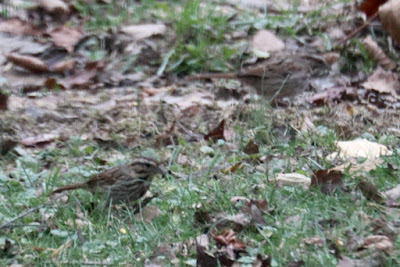
























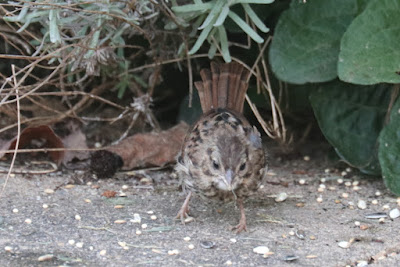
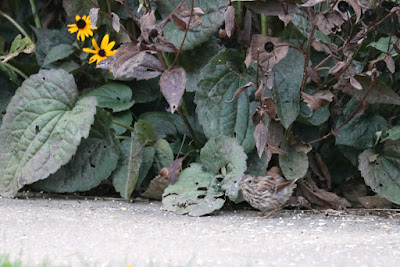

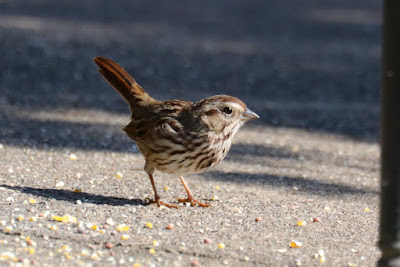
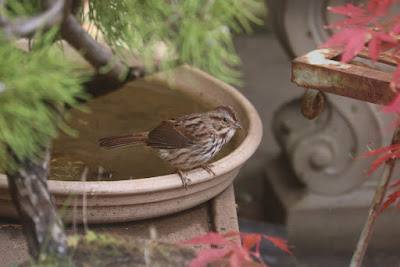









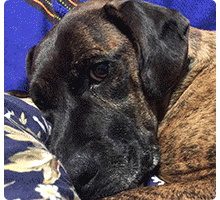





Saturday, March 12, 2022
3 comments